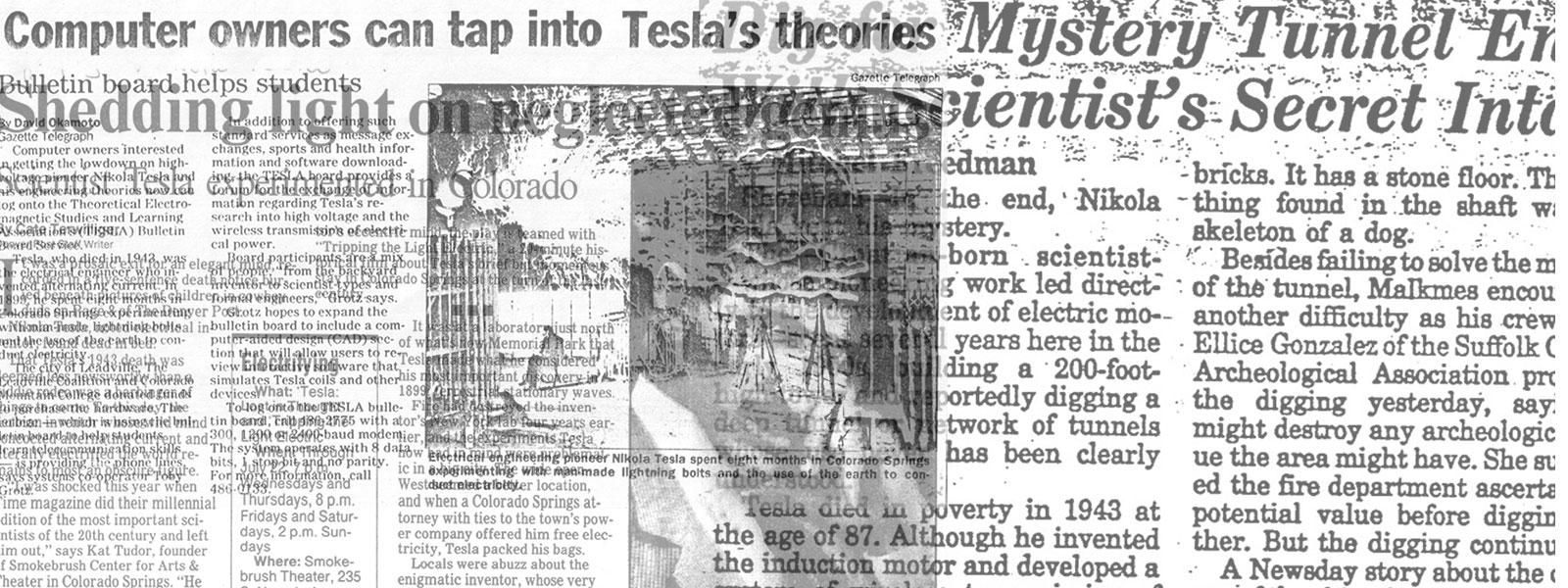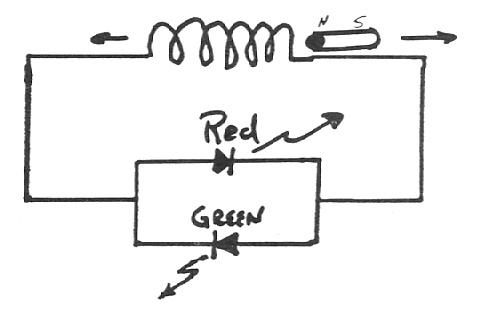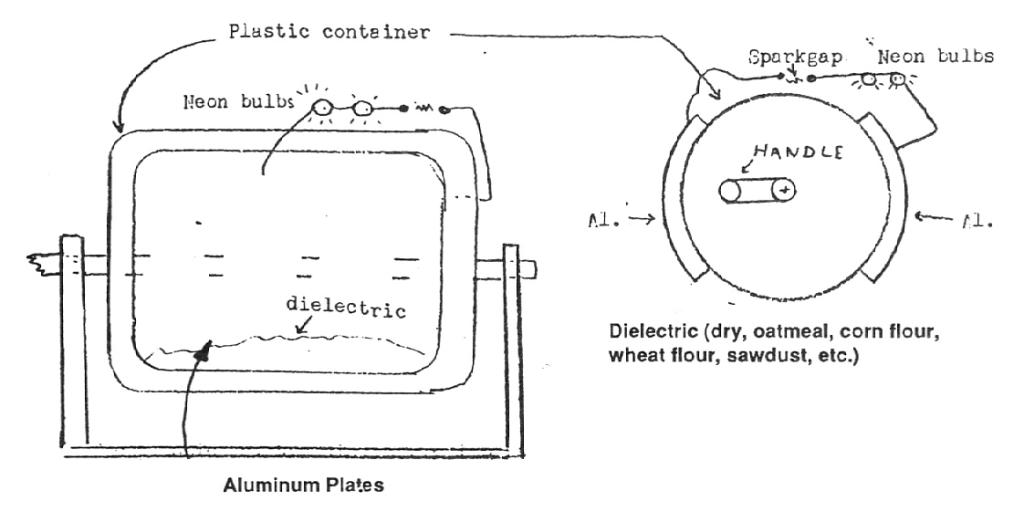
Nikola Tesla Articles
Ongoing Projects at the Nikola Tesla Museum of Science & Industry (Apr. 1991)
At the Nikola Tesla Museum of Science & Industry, a small - but growing - body of dedicated researchers are re-examining many of the theories and patents of Nikola Tesla. It is through this column, The Right Stuff!!, that much information about this research and the men behind it is released to the public.
Electric Energy Research
Researcher: Rob Stovall
Often we are taught that although there are large amounts of static electricity associated with every movement we do, that form of energy is virtually useless. What the erstwhile professor did not reveal, is that if you can get the energy to move, a current is formed and the energy can then be used. The trick, then, is to force a movement of energy. It is along these lines of thought that Rob Stovall of Florence, Colorado excells. Rob has developed a series of experiments to demonstrate the basics of electromagnetic and electrostatic energy.
Electromagnetics:
The first demonstration at the museum is a modern offshoot of Faraday’s 1830s magnet and coil demonstration. In our version, a magnet is passed through a coil of wire to light a couple of LEDs (one red--one green). The LEDs are placed in parallel with each other, but with their “polarities” opposed. As the coil is passed back and forth through the coil, alternate poles are passing through the coil, first lighting the red LED; and then, when the magnet is moved in the other direction, the green LED is lit. Thus alternating current induced by a moving magnetic field is readily demonstrated.
Tesla knew that energy is lost when there is a sharp change in direction. His turbine was based on this principle. This is also the basis of the modern day generators. In a regular generator, a magnet is passed by the face of the windings (coils) as the magnet is spun on an axis parallel to the windings. However, when Rob built his generator on display at the museum, he developed a unique method for moving the magnets through the coil.
Rob knew that the full power of the magnetism is obtained by running the magnets through the coil or coils instead of having the magnets (or electric magnets) pass by the face of the windings as is the case in dynamic generators. To take advantage of this principle, the magnets were placed on a torus (doughnut) shaped set of bearings which passed through a half torus shaped PCV pipe. A coil of wire was wound around the PCV pipe. When the bearings are spun, the magnets travel through the center of the coil. Each set of magnets are arranged with like poles facing each other in order to increase the power of the magnetism.
Each coil can be used as a single generator or can be combined in series or parallel. All of Ohms law are applicable and can be used to determine the energy output. Future improvements could be to construct the magnets as in a turbine and allow water or steam to flow through it. The turbine step is eliminated because the generator is the turbine.
Electrostatics:
Two different materials that are rubbed against each other build up opposite charges. This form of electricity is referred to as electrostatics. Electrostatic energy permeates our environment and is most evident when we touch a doorknob and a spark jumps out (discharges).
This spark discharge has enough energy to light lights and put holes in various materials. Even though it is considered a useless force, thousands of dollars are spent annually by the electronics industry to prevent electrostatic discharge--they refer to it as ESD.
At the museum, we introduce visitors to the energy inherent in static electricity by way of the static box. The box is made of styrofoam and has a plexiglass top. The inside bottom of the box is covered with aluminum foil. A “round” piece of styrofoam is covered with foil and placed in the box. As the plexiglass is rubbed with tissue, a charge is built up on the plexiglass, and an opposite charge is induced on the foil. The ball resting on the foil is then hurled upwards because like charges repel! When the ball hits the plexiglass, it picks up the same charge as the plexiglass and is repelled downwards. This happens so fast that the ball just jumps all around the box.
As mentioned earlier, in order to utilize static charge, a way has to be found to make the charge move. The key is in a spark gap. One of the devices Rob has constructed consists of two sheets of foil attached to styrofoam sheeting and tied together through a spark gap. When one of the sheets is lifted, an imbalance is created and current flies through the spark gap in an attempt to equalize the charge.
Rob took this a step further by creating a generator that takes into account all of the forces coming into play. He began his investigation by inserting a shaft through the middle of a plastic one-gallon wide-mouth container and placing a handle on the end. A plate of aluminum was placed on either side of the container with a space between. Rob then connected neon bulbs, NE-2s, (fluorescent will also work) to one plate and at the other end of the bulb he made a spark gap and terminated the other end of the spark gap on the other plate.
A small handful of dry oatmeal right out of the box was placed into the plastic container. As Rob turned the handle, the bulbs lit up. The theory is that the plastic and the dielectric impart opposite charges on each other. As the first plate approaches the dielectric and the other plate leaves the dielectric it induces electrons from one plate through the bulb to the other plate.
Additional research and experimentation on Rob’s part revealed that the combination of materials for the container and the dielectric are enormous. Some materials work very well and other not so well and others don’t work at all. In any case we always look forward to Rob’s visits to the museum, because you can never tell what he will come up with next!



